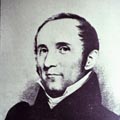The standard musket manufacturing system in Europe, and in the United States
prior to 1818, had been the careful creation of master copies of firearms,
known as pattern firearms, which were then distributed to the various armories
for replication. As suitable precision measurement methods had not yet been
devised, production specifications were, for the most part, more qualitative
than quantitative.
For Springfield
Armory, even the fabrication of the first gauges had more in common with the
older system of pattern musket production than with any precise quantitative
process. Orders for gauges in 1821 specified that they were to be made “as
convenient for skillful and attentive workmen to conform to.” Throughout
the 1820’s, as a result, there had been considerable variation in weight
from musket to musket. This was the case for the private contractors as well
as for the national armories. The production in 1824 of bayonets at Harper’s
Ferry Armory that would fit musket barrels made at Springfield Armory was considered
a real achievement.
The use
of gauges for anything but the inspection of finished arms was virtually unknown
except at Springfield Armory where it was apparently the rule by 1819. This
technological advance occurred first at Springfield Armory around 1818 when
Springfield Armory’s master armorer, Adonijah Foot, and several other workmen
developed a system for gauging musket components. This achievement so impressed
the new Chief of Ordnance, Col. George Bomford,  that he ordered it in 1821
to be enacted not only at Harper’s Ferry Armory but among the private
contractors as well. By 1823, the system of inspection and gauging developed
at Springfield Armory was the Ordnance Department standard. Private manufacturers
soon found that the issuance of future arms contracts depended on their adherence
to the standard set by Springfield Armory. that he ordered it in 1821
to be enacted not only at Harper’s Ferry Armory but among the private
contractors as well. By 1823, the system of inspection and gauging developed
at Springfield Armory was the Ordnance Department standard. Private manufacturers
soon found that the issuance of future arms contracts depended on their adherence
to the standard set by Springfield Armory.
The use of interchangeability
in clock manufacturing in Connecticut |